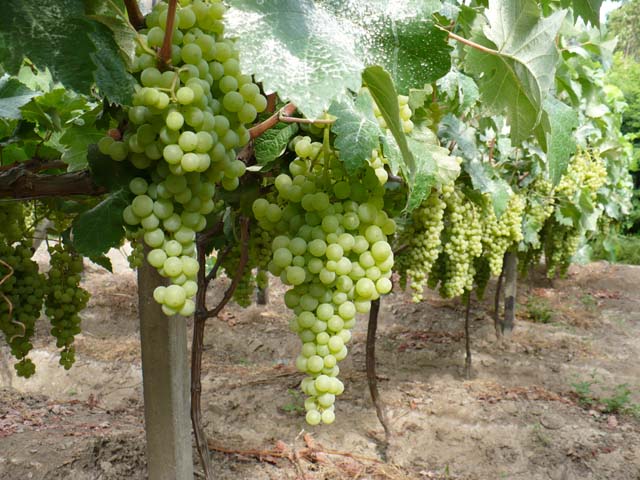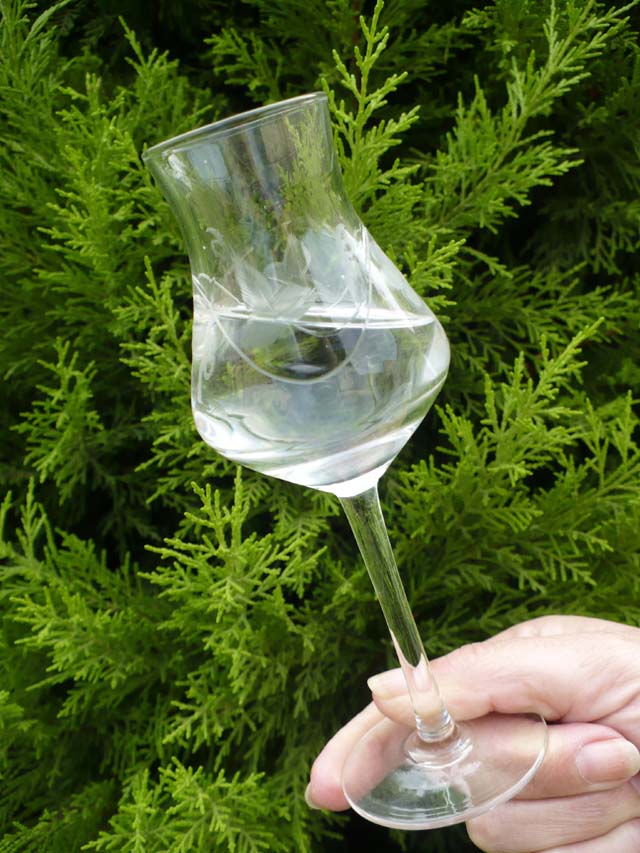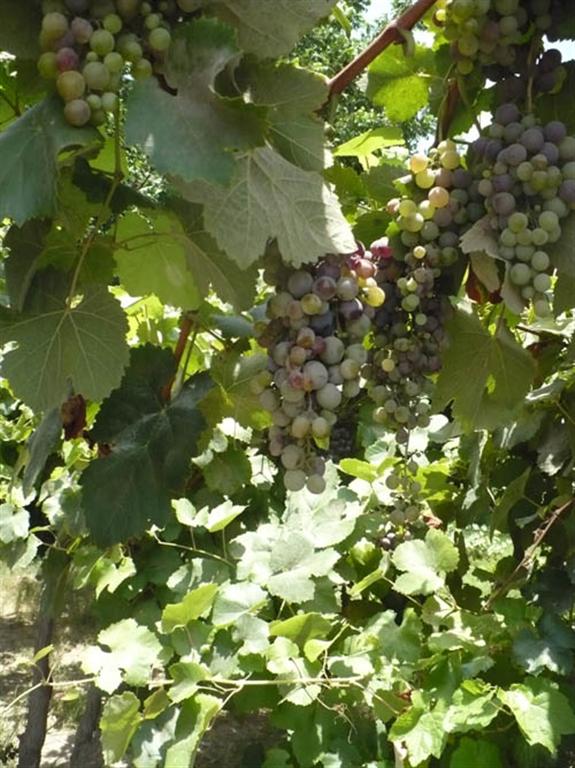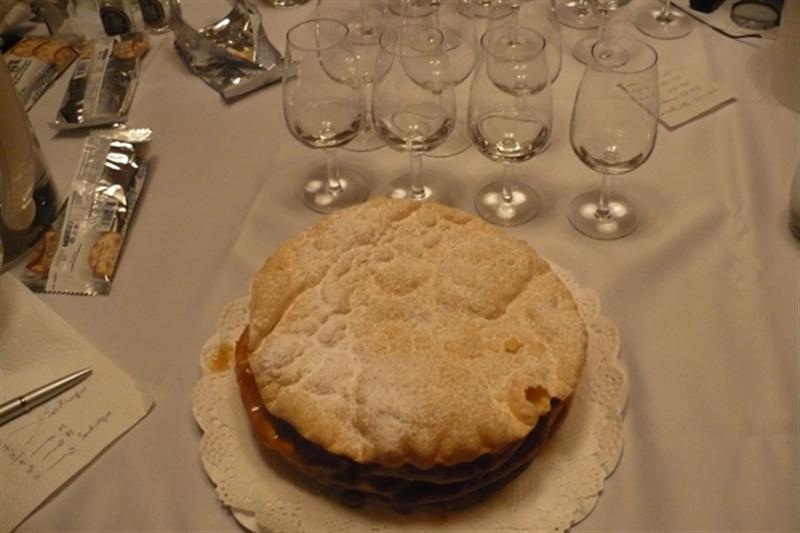Translate by Katrina Heimark
1.-Sirs at Elpiscoesdelperu:
We would like to know how to import Pisco and Peruvian wine to the United States. We live in the State of Virginia.
United States. We live in the State of Virginia.
Sincerely
Lucio Dueñas
Tel: 703-825-1681
lurosemaduenas@aol.com
2.- Hi! I’ve just finished writing a book on Pisco titled “Pisco in its birthplace” (Pisco en su cuna in Spanish). I would like to advertize it on your website.
Luis Felipe Hernández
anael200077@hotmail.com
3.-This letter is to send you my greetings and at the same time ask how I can offer my products to various companies in the wine sector.
Sincerely,
Comercial Era
Luis C. Díaz Espinoza
eracomercial@yahoo.com
4.-Congratulations on your effort of spreading the word about Pisco. Where is your office in Lima so I can purchase copies of your magazine?
Ing. Julio Cesar Pizzali Graus
Julio_pizzali@hotmail.com
5.- Good afternoon. My name is Walter, I’ve tried to contact you from Ayacucho. I’m writing to request information about companies that provide equipment for the production of wines and Pisco. I ask because in the city of Ayacucho, the Universidad Nacional de San Cristobal de Huamanga and the Department of Agricultural Sciences, which has had for several decades a vineyard and systems for the production of wine which are in very primitive conditions, would like to improve their equipment, machinery and materials in order to optimize their operation. I ask you to please give me the contact information of these companies and suppliers of vine seedlings for the following varieties:
-Common black grape
-Moscatel
-White Italia
-Cobertel
-Merlot
We are thinking of planting a minimum of 20 hectares for a vineyard.
We also need:
Five stainless steel fermentation chambers, 05 M³
20 250 liter pipes
Transfer pump
Other equipment that may be necessary for the production process.
At the moment I can’t think of other materials that would be necessary, as I am not a specialist in this area, so I ask you for your help in this matter.
Sincerely,
Walter F. Huayllaccahua Velásquez
huayllave@hotmail.com
6.-Hi! I’m from Ica and I live in Los Angeles, USA and I love a good Pisco!
Gustavo Cabrera
g.cabrera@sbcglobal.net
7.- Sirs. I would like to know if in Lima there are 20 liter barrels of good quality Pisco, and if you could give me an address. Or will I have to travel to Chincha or Pisco to get them?
Sincerely,
Pablo Fernández Sánchez
pablofernan75@hotmail.com
8.- Hi! You’re effort is very important to me, and I would love to learn more about Pisco!
Regards,
Marisol
luana_1123@hotmail.com
9.-I’m interested in subscribing to the free e-magazine. I enjoy the way it is presented. I am convinced that Peruvians should become united in the campaign to publicize the qualities and benefits of our Pisco! I reside in Barcelona, and just recently Pisco has become available through a few importers, but there are no publicity campaigns for Peruvian Pisco. I would like to work on this, and hope you can contact me.
Regards,
Elsa
eagle2011c@yahoo.es
10.-Good morning. We are pleased to contact you and present our company FONDO DE PROMOCIÓN DEL PISCO S.A.C. - FONPROPISCO, made up of Peruvian capital, which was born out of the mission to give every Peruvian a “Pisco-loving heart.” We hope to one day be an institution that serves the Pisco producing sector of Peru, where producers can find quick and dynamic solutions to their needs, and achieve continual growth.
The idea for this company arose out of the experience we have had during more than 20 years of Pisco commercialization, especially in exports to important markets such as that of the United States, Canada, Puerto Rico, Chile, France, Switzerland, Germany, Norway, and New Zealand, to name a few. We are the pioneers in the South Korean market, which we are recently entering.
During this long period of time, we have been able to note the complete abandonment of some 80% of Pisco producers, which are excluded from our governmental support programs. We are saddened by this, as Pisco is a national product, which represents our tradition, and culture, and has a guarantee of origin.
We invite you to visit our newly inaugurated website, www.fonpropisco.com.pe We hope to count on your support, and perhaps a few lines that could be dedicated to the coverage of such an important project.
Julie Escudero Asin
www.fonpropisco.com.pe
11.-Sirs at El Pisco es del Perú
I would like to know how things are developing in regards to the “grape firewater” in the northern region of Peru, as it cannot be called Pisco due to the fact that the area does not have a respective Certificate of Origin. Thank you.
Luis León
siulnoel40@hotmail.com
12.-Mr. Livio Pastorino, thank you for your quick response. I am unable to subscribe to your website; it must be the way my computer is programmed. Would you be so kind as to register my subscription please? Also, do you know with whom I need to speak in the Peruvian Embassy in Madrid in order to begin activities that would promote Pisco?
Thank you,
Elsa Merino.
eagle2011c@yahoo.es
13.-Hi, I would like to get more information about Pisco that I cannot find in other areas. History professor Alejandro Málaga recommended that I contact you.
Thank you
Verónica
betty15_155@hotmail.com
14.-Hello. I believe that it is very important that people know the true origin of Pisco.
Regards
Said
lelis_sasa@hotmail.com
15.-Hi Livio, congratulations on the initiative. I am a producer of Pisco Chacra Maestra in Ica. I would like to meet you sometime soon! Hugs!
Carlos Olaechea
marketing@chacramaestra.com
16.-Hello, this is a very interesting website.
Regards,
Cristel
17.-Hi! I don’t want to generate a controversy, and even less so a byzantine fight against those who ignore the right to be the only ones who can use the Guarantee of Origin (“denominacion de origen”). However, the title of this website is wrong: Pisco is from Peru…certainly I must say that the enemy is not Chile, even in their audacious use of the guarantee of origin. I must say that the enemy of a Peruvian is another Peruvian. We poke each other’s eyes out, we marginalize one another, and we are even disparaging with our own countrymen.
Ancash, specifically the district of Moro, has been a Pisco producer since the beginning of colonization, and currently we are the regional capital of Pisco.
Pisco is from the SOUTH…and not only the southern producers of our country, but also those of our neighboring country. They are one and the same. It is outrageous that those who marginalize us do so without allowing us to defend ourselves and are exceptionally strict. They are famous for their “Adam’s Complex” and far from being nationalistic are super regionalistic.
Moro is about 2 hours away from Chimbote in the Nepeña River Valley. Visit our lands, see and spread the word about our Pisco, which modestly competes with southern Pisco, and even more so with what is produced in Chile.
Regards,
Manuel A. Gayoso Castillo
xcibernauta@gmail.com
18.-When it was not the custom for a lot of people to drink Pisco, ever since I was a teenager I learned to drink it with my grandfather and uncles. I taught my friends to drink Chilcanos, and they always said I prepared them well. This magazine has allowed me to get to know the experts a little more as well as more about the Pisco culture.
Regards,
Alberto Peña Neumann
penaneumannalberto@gmail.com
19.-Congratulations on a very interesting magazine. In March I formed ZACOS, an importing business and promoter of Peruvian products. I am Peruvian and I have been living in Sydney, Australia since 1992. I ask that you send me links or contacts that are related to the export of Pisco. The Australian market does not yet know about our Pisco. Unfortunately the Pisco that is served here is Chilean. As a Peruvian, I feel the obligation to promote our Peruvian products. Please let me know if you can send me information.
Regards,
Roberto Zegarra.
roberto@zacos.com.au
20.-It is very unfortunate that despite the fact that I am Peruvian and I celebrate important days such as the Day of Pisco, the Day of the Pisco Sour and other festive national dates, I am living here in the Russian Federation without Pisco.
What’s going on friends!? Don’t fall asleep on me!
Here in the Russian Federation, since about the month of April 2011, once again, and I repeat, once again, Chilean firewaters such as those of Capel, Bauza and Aba are being promoted via consumption, sales and advertising, as Pisco.
What’s going on friends!? I’m all alone here in Russia, and I’m trying to find someone in Peru to listen to me, so we can begin to sell our Pisco here. But I would also like to register it here in Russia before importing Pisco; register it with the name of Pisco in the brand and patent registries of the Russian Federation, and do so before the Chileans do it with their products! Otherwise, we will have yet another regret. At least as of April 2010, I knew that the name of Pisco was not registered in the patent office of the Russian Federation, but the word “Capel” was registered.
Pay attention friends! I repeat that I have been waiting for more than a year for someone to listen to me, and so far, no one has answered my call…what a shame!
Many Russian companies that import alcoholic beverages have told me, even without trying or seeing the true Pisco which only comes from Peru, that they cannot differentiate between the quality or even compare it to the Chilean product, under the brand name of Capel.
I hope someone hears my plea!
Wilder Gómez Ramos
villy-jamwildergomez@yandex.ru .
P.S. If you would like to call me, here is the information.
7 is the country code. 812 is the city code, and my cell phone is 953 3494773; the other phone number I use is 906 2502983. You can call me any time, but I prefer between 12pm and 3pm, Lima time, which is between 9pm and midnight here.
Write to us! At: editores@elpiscoesdelperu.com
1.-Sirs at Elpiscoesdelperu:
We would like to know how to import Pisco and Peruvian wine to the
 United States. We live in the State of Virginia.
United States. We live in the State of Virginia.Sincerely
Lucio Dueñas
Tel: 703-825-1681
lurosemaduenas@aol.com
2.- Hi! I’ve just finished writing a book on Pisco titled “Pisco in its birthplace” (Pisco en su cuna in Spanish). I would like to advertize it on your website.
Luis Felipe Hernández
anael200077@hotmail.com
3.-This letter is to send you my greetings and at the same time ask how I can offer my products to various companies in the wine sector.
Sincerely,
Comercial Era
Luis C. Díaz Espinoza
eracomercial@yahoo.com
4.-Congratulations on your effort of spreading the word about Pisco. Where is your office in Lima so I can purchase copies of your magazine?
Ing. Julio Cesar Pizzali Graus
Julio_pizzali@hotmail.com
5.- Good afternoon. My name is Walter, I’ve tried to contact you from Ayacucho. I’m writing to request information about companies that provide equipment for the production of wines and Pisco. I ask because in the city of Ayacucho, the Universidad Nacional de San Cristobal de Huamanga and the Department of Agricultural Sciences, which has had for several decades a vineyard and systems for the production of wine which are in very primitive conditions, would like to improve their equipment, machinery and materials in order to optimize their operation. I ask you to please give me the contact information of these companies and suppliers of vine seedlings for the following varieties:
-Common black grape
-Moscatel
-White Italia
-Cobertel
-Merlot
We are thinking of planting a minimum of 20 hectares for a vineyard.
We also need:
Five stainless steel fermentation chambers, 05 M³
20 250 liter pipes
Transfer pump
Other equipment that may be necessary for the production process.
At the moment I can’t think of other materials that would be necessary, as I am not a specialist in this area, so I ask you for your help in this matter.
Sincerely,
Walter F. Huayllaccahua Velásquez
huayllave@hotmail.com
6.-Hi! I’m from Ica and I live in Los Angeles, USA and I love a good Pisco!
Gustavo Cabrera
g.cabrera@sbcglobal.net
7.- Sirs. I would like to know if in Lima there are 20 liter barrels of good quality Pisco, and if you could give me an address. Or will I have to travel to Chincha or Pisco to get them?
Sincerely,
Pablo Fernández Sánchez
pablofernan75@hotmail.com
8.- Hi! You’re effort is very important to me, and I would love to learn more about Pisco!
Regards,
Marisol
luana_1123@hotmail.com
9.-I’m interested in subscribing to the free e-magazine. I enjoy the way it is presented. I am convinced that Peruvians should become united in the campaign to publicize the qualities and benefits of our Pisco! I reside in Barcelona, and just recently Pisco has become available through a few importers, but there are no publicity campaigns for Peruvian Pisco. I would like to work on this, and hope you can contact me.
Regards,
Elsa
eagle2011c@yahoo.es
10.-Good morning. We are pleased to contact you and present our company FONDO DE PROMOCIÓN DEL PISCO S.A.C. - FONPROPISCO, made up of Peruvian capital, which was born out of the mission to give every Peruvian a “Pisco-loving heart.” We hope to one day be an institution that serves the Pisco producing sector of Peru, where producers can find quick and dynamic solutions to their needs, and achieve continual growth.
The idea for this company arose out of the experience we have had during more than 20 years of Pisco commercialization, especially in exports to important markets such as that of the United States, Canada, Puerto Rico, Chile, France, Switzerland, Germany, Norway, and New Zealand, to name a few. We are the pioneers in the South Korean market, which we are recently entering.
During this long period of time, we have been able to note the complete abandonment of some 80% of Pisco producers, which are excluded from our governmental support programs. We are saddened by this, as Pisco is a national product, which represents our tradition, and culture, and has a guarantee of origin.
We invite you to visit our newly inaugurated website, www.fonpropisco.com.pe We hope to count on your support, and perhaps a few lines that could be dedicated to the coverage of such an important project.
Julie Escudero Asin
www.fonpropisco.com.pe
11.-Sirs at El Pisco es del Perú
I would like to know how things are developing in regards to the “grape firewater” in the northern region of Peru, as it cannot be called Pisco due to the fact that the area does not have a respective Certificate of Origin. Thank you.
Luis León
siulnoel40@hotmail.com
12.-Mr. Livio Pastorino, thank you for your quick response. I am unable to subscribe to your website; it must be the way my computer is programmed. Would you be so kind as to register my subscription please? Also, do you know with whom I need to speak in the Peruvian Embassy in Madrid in order to begin activities that would promote Pisco?
Thank you,
Elsa Merino.
eagle2011c@yahoo.es
13.-Hi, I would like to get more information about Pisco that I cannot find in other areas. History professor Alejandro Málaga recommended that I contact you.
Thank you
Verónica
betty15_155@hotmail.com
14.-Hello. I believe that it is very important that people know the true origin of Pisco.
Regards
Said
lelis_sasa@hotmail.com
15.-Hi Livio, congratulations on the initiative. I am a producer of Pisco Chacra Maestra in Ica. I would like to meet you sometime soon! Hugs!
Carlos Olaechea
marketing@chacramaestra.com
16.-Hello, this is a very interesting website.
Regards,
Cristel
17.-Hi! I don’t want to generate a controversy, and even less so a byzantine fight against those who ignore the right to be the only ones who can use the Guarantee of Origin (“denominacion de origen”). However, the title of this website is wrong: Pisco is from Peru…certainly I must say that the enemy is not Chile, even in their audacious use of the guarantee of origin. I must say that the enemy of a Peruvian is another Peruvian. We poke each other’s eyes out, we marginalize one another, and we are even disparaging with our own countrymen.
Ancash, specifically the district of Moro, has been a Pisco producer since the beginning of colonization, and currently we are the regional capital of Pisco.
Pisco is from the SOUTH…and not only the southern producers of our country, but also those of our neighboring country. They are one and the same. It is outrageous that those who marginalize us do so without allowing us to defend ourselves and are exceptionally strict. They are famous for their “Adam’s Complex” and far from being nationalistic are super regionalistic.
Moro is about 2 hours away from Chimbote in the Nepeña River Valley. Visit our lands, see and spread the word about our Pisco, which modestly competes with southern Pisco, and even more so with what is produced in Chile.
Regards,
Manuel A. Gayoso Castillo
xcibernauta@gmail.com
18.-When it was not the custom for a lot of people to drink Pisco, ever since I was a teenager I learned to drink it with my grandfather and uncles. I taught my friends to drink Chilcanos, and they always said I prepared them well. This magazine has allowed me to get to know the experts a little more as well as more about the Pisco culture.
Regards,
Alberto Peña Neumann
penaneumannalberto@gmail.com
19.-Congratulations on a very interesting magazine. In March I formed ZACOS, an importing business and promoter of Peruvian products. I am Peruvian and I have been living in Sydney, Australia since 1992. I ask that you send me links or contacts that are related to the export of Pisco. The Australian market does not yet know about our Pisco. Unfortunately the Pisco that is served here is Chilean. As a Peruvian, I feel the obligation to promote our Peruvian products. Please let me know if you can send me information.
Regards,
Roberto Zegarra.
roberto@zacos.com.au
20.-It is very unfortunate that despite the fact that I am Peruvian and I celebrate important days such as the Day of Pisco, the Day of the Pisco Sour and other festive national dates, I am living here in the Russian Federation without Pisco.
What’s going on friends!? Don’t fall asleep on me!
Here in the Russian Federation, since about the month of April 2011, once again, and I repeat, once again, Chilean firewaters such as those of Capel, Bauza and Aba are being promoted via consumption, sales and advertising, as Pisco.
What’s going on friends!? I’m all alone here in Russia, and I’m trying to find someone in Peru to listen to me, so we can begin to sell our Pisco here. But I would also like to register it here in Russia before importing Pisco; register it with the name of Pisco in the brand and patent registries of the Russian Federation, and do so before the Chileans do it with their products! Otherwise, we will have yet another regret. At least as of April 2010, I knew that the name of Pisco was not registered in the patent office of the Russian Federation, but the word “Capel” was registered.
Pay attention friends! I repeat that I have been waiting for more than a year for someone to listen to me, and so far, no one has answered my call…what a shame!
Many Russian companies that import alcoholic beverages have told me, even without trying or seeing the true Pisco which only comes from Peru, that they cannot differentiate between the quality or even compare it to the Chilean product, under the brand name of Capel.
I hope someone hears my plea!
Wilder Gómez Ramos
villy-jamwildergomez@yandex.ru .
P.S. If you would like to call me, here is the information.
7 is the country code. 812 is the city code, and my cell phone is 953 3494773; the other phone number I use is 906 2502983. You can call me any time, but I prefer between 12pm and 3pm, Lima time, which is between 9pm and midnight here.
Write to us! At: editores@elpiscoesdelperu.com
 quality
of Pisco, also known as “Denominacion de Origen” in Spanish; but the
question arises, do we know how to tell the difference between a
Geographical Indication and a Guarantee of Origin? Due to this question,
we will proceed to define the two.
quality
of Pisco, also known as “Denominacion de Origen” in Spanish; but the
question arises, do we know how to tell the difference between a
Geographical Indication and a Guarantee of Origin? Due to this question,
we will proceed to define the two.  history that precedes it. Although Pisco, as many of us know, has been
produced in Peru since the 16th Century, only just this year was the
Pisco Regulatory Council established for the first time. And, without a
doubt, the industry needs it.
history that precedes it. Although Pisco, as many of us know, has been
produced in Peru since the 16th Century, only just this year was the
Pisco Regulatory Council established for the first time. And, without a
doubt, the industry needs it.  Union?
Union?